Don’t let losing or forgetting your ATV key stop you from enjoying your quad. In this article, I’ll show you a few ways to start your ATV or UTV without the key. You can do any of these methods with basic hand tools found in most garages.
Your ignition switch is simply a break in a circuit telling your electrical box when it’s ok to start or not. When there’s no key in the ignition, no power can be sent to the rest of the needed components to start the engine. There are some pretty simple ways to get around this though.
Of course the easiest way is if your machine has a pull start or kick starter on it. A lot of the newer quads being made don’t have this functionality anymore unfortunately. If you do have this option, simply unhook the ignition switch from the cdi or electrical box. That way the engine will start without needing a key inserted, then start the engine.
This method may work without a pull start or kick start if you can push your machine to a good pace and pop it into gear. Your other options are:
This is my preferred method to starting an ATV without the key. Most ignition switches will only have two wires going into it. On wire is sending power in, and the other wire sends power to the electrical box if the key is inserted. Telling the machine that it’s ok to start.
Simply remove the ignition switch from the equation. You can disassemble the switch or just cut the two wires leading to it. Be sure to leave enough slack in the wire just in case you want replace the ignition switch later on.
Now connect the two wires and your electric start should work like always. Remember to connect the wires on the side leading to the engine not the side leading to the ignition.
You have to remember to disconnect the two wires when you’re done riding or you’ll drain the battery dead. I would recommend you put a simple switch here in place of the ignition, a simple on/off switch will work perfect.
I would recommend you put a simple switch here in place of the ignition, a simple on/off switch will work perfect.
Some of the newer quads have more than two wires coming out of the ignition switch, not to worry. A lot of times there will also be a ground wire or something like that. The two wires you should focus on are red and black. Cut those two wires and tape them together. Make sure you tape together the ends of the wire leading to the engine not to the ignition.
You may also see a black with white stripe and green wire. These two wires are shorted together when the key is in the off position. You will need to open that short by cutting the black with white stripe wire and tapping off the end.
Once the black with white stripe is cut and taped, and the red and black wires and spliced together and taped. You should have power to your quad as if the key was turned on. You can use your normal electric start and everything the way it is.
Remember to disconnect the black and red wires when you’re done to avoid killing the battery.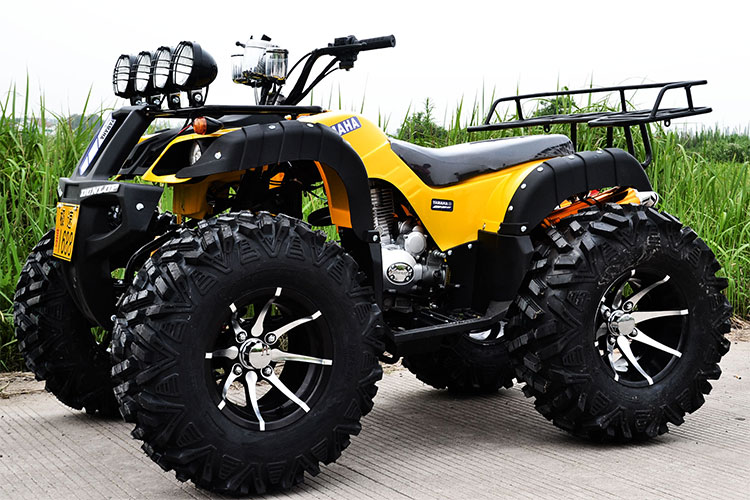 You could also tape the black with white stripe wire back together to prevent anyone from easily starting the quad.
You could also tape the black with white stripe wire back together to prevent anyone from easily starting the quad.
This doesn’t work on all ATVs, only machines with an electric start option only. Your solenoid should be near your battery and wiring harness. On some quads you have to remove a side panel to access it.
Your solenoid will have two main wires coming out of it and possibly some other smaller ones, we only care about the two big wires. You need to lay a wrench or something metal across the two connectors of the main wires. Then, you should be able to start the quad.
I don’t use this method myself because you have to be real careful the wrench or piece of metal is not touching anything else that could short it out. If you accidentally touch the frame or something when doing this, you could cause damage to your electrical parts of the engine.
Desperate times call for desperate measures, and that’s what this method is. This trick is mostly used by thieves, so if you’re driving around the trails with a screw driver sticking out of the ignition and get stopped by trail enforcement, be ready to get asked some questions.
This trick is mostly used by thieves, so if you’re driving around the trails with a screw driver sticking out of the ignition and get stopped by trail enforcement, be ready to get asked some questions.
Basically you just hammer a screwdriver into the ignition and turn it on as if it were the key. The screwdriver will brake the pins in the lock allowing you to turn the ignition on.
I don’t recommend this method because you could damage the ignition and not get the quad to start anyway. And even if you are successful, you’re now riding around with a screwdriver sticking out.
This is obviously the best method in the list. Of course if you forgot your key and you’re already way out on the trail, then there’s no way you can order a part and do the replacement. This is more for someone who lost their key, or broke their ignition trying the screwdriver method.
Here’s a decent Replacement Ignition Switch found on Amazon to help get your search started. If you can find a replacement from the manufacturer for your specific machine, that would be the best route, but probably a lot more expensive.
If you can find a replacement from the manufacturer for your specific machine, that would be the best route, but probably a lot more expensive.
One thing I want to mention is that it’s always best practice to tape up any wires you cut and exposed. You may have gotten the hotwire job done correctly, but if any of those wires hit the frame and short out you could have bigger problems.
Leave enough slack in the wires to work on them again later on. Try to avoid cutting the wires to the ignition real close to the ignition itself, or somewhere that makes it hard to get to the wires. You may want to work on it later on, like putting in a new ignition switch or on/off switch.
Don’t tell everyone how easy you hot wired your quad and how you did it. Maybe you’ll be safe to do this, but I lean a little more to the cautious side when it comes to my machines.
Sharing is caring!
James Milford answered
If you have lost the keys to your 4-wheeler and need to start it, there is a method you can use to get it started quickly.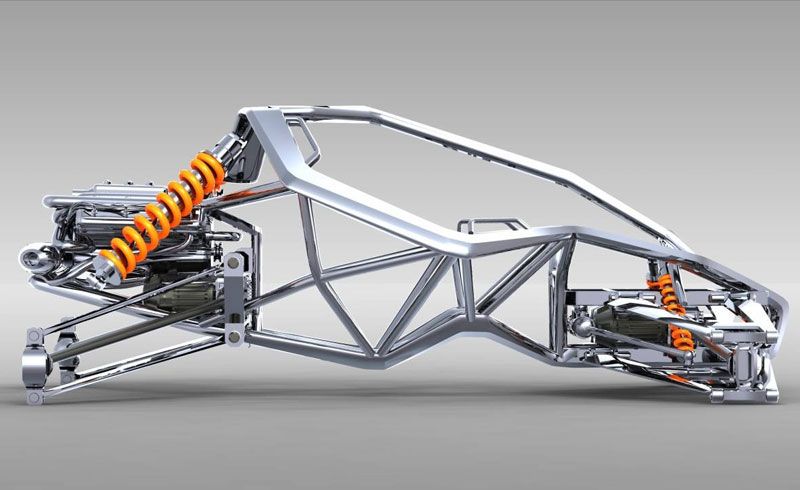 Just make sure that the 4-wheeler belongs to you as hot-wiring a vehicle that does not belong to you could result in a long stint in the local jail. There are also other alternatives to getting your 4-wheeler going again if you're not comfortable fooling with electrical wiring.
Just make sure that the 4-wheeler belongs to you as hot-wiring a vehicle that does not belong to you could result in a long stint in the local jail. There are also other alternatives to getting your 4-wheeler going again if you're not comfortable fooling with electrical wiring.
Simply cut the wires that are attached to the ignition switch first. Then you'll need to find the key hot wire, that wire is most often colored red, and the wire that connects to the coil. Place a three-way pull-apart butt connector on the wire ends and then touch the ignition wire to the three way connection. After you have started the bike make sure to tape up the ignition wire so it does not touch anything else and short out.
To get your 4-wheeler started in a less dramatic way, call your local locksmith. The fees will vary but expect to pay at least $25 for a locksmith to come out to your location and craft a new key for you. It will only take about thirty minutes or so, and as soon as you get your new key immediately go and make a copy of it so you won't be stuck in this situation again.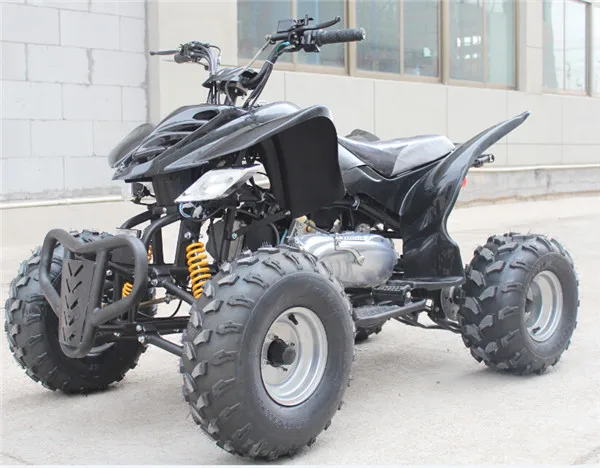
Another thing you can do to get your 4-wheeler rolling again is to go back to the dealer where you brought the vehicle. Many dealers will be able to get a new key for you for a small fee, and once again, the first thing you should do as soon as you get a new key is to make a copy or two of it so you don't find yourself in this situation again down the road.
thanked the writer.
blurted this.
Anonymous answered
There are usually 4 wires to the ignition switch. 2 of them(usually red) start it, and the other 2(usually black or brown) will kill it. Touch two wires together till the neutral light comes on(make sure it is in neutral first). When you see the light come on twist those together and start it. If you hear or see a spark and smoke, those aren't the right wires. Probably the 2 red ones will work depending on what kind of 4wheeler you have
thanked the writer.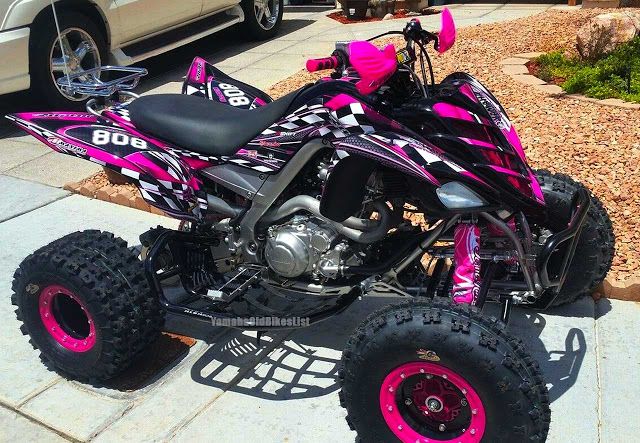
blurted this.
Anonymous answered
I do not now how to Hotwire a 4 wheeler
thanked the writer.
blurted this.
Taani Joest answered
How to hot wire a predator 50 with a picture?
thanked the writer.
blurted this.
Anonymous answered
Yeah its easy you need to do is cut the wires on th bottom of the switch find the key hot wire and the wire that energizes the coil place a three way pull apart butt connector on the wire ends then find the ignition wire when you want to start the bike touch it to the three way connection. Make sure you can put the ignition wire up so it wont touch anything
thanked the writer.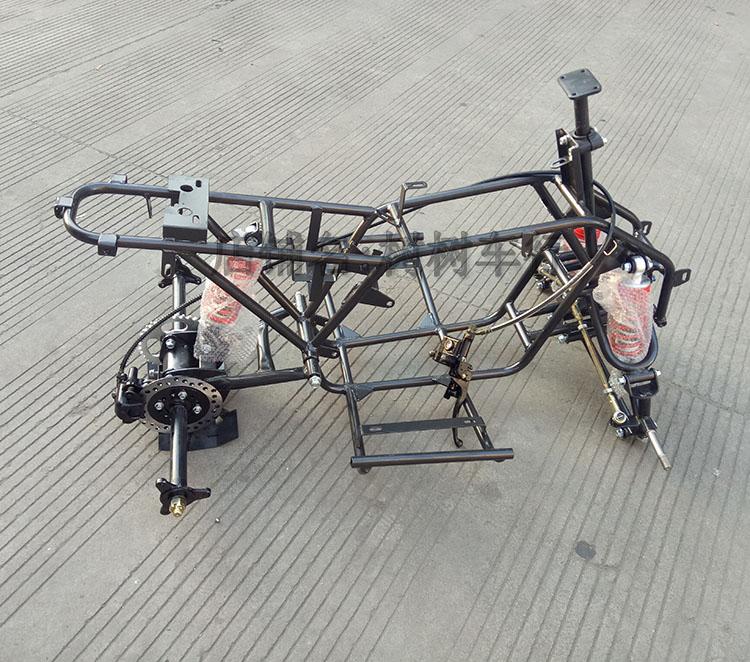
blurted this.
Anonymous answered
There's nothing hard about it. I hot-wired my friend's banshee today because I wanted to ride and he lost the key. We simply cut all 4 wires to the ignition and wired them all together. The fourwheeler didn't want to start at first because it has been sitting for about 2 years but after a lot of kicks, it started up.
thanked the writer.
blurted this.
Anonymous answered
It is to hard a car is a lot easier
thanked the writer.
blurted this.
Electrical work is high risk. That is why it is necessary to know and take into account all the important factors affecting safety.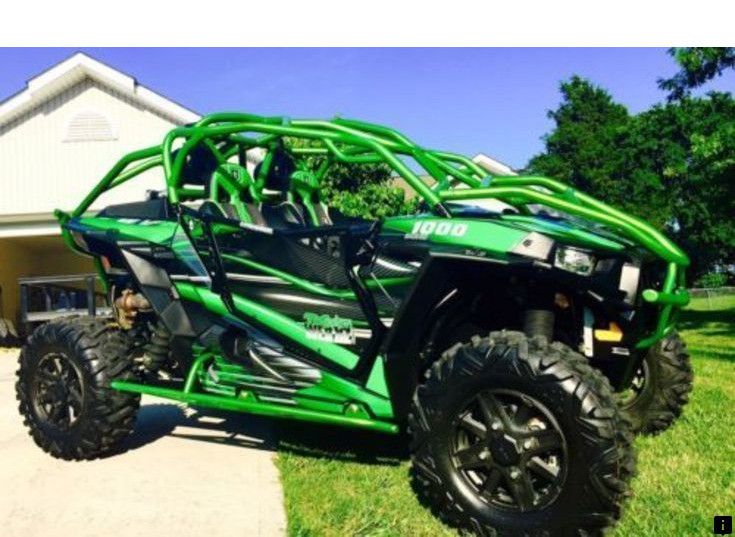 These include strong heating of the wires during operation. This feature is inherent in all wires and cables. In addition, it determines the rules for installing electrical wiring and further connecting energy consumers to the network. Cable heating also affects the choice of a particular brand of cable and wire products and the maximum value of the connected load. In order to find out the degree of heating of the wires, it is necessary to understand the cause of this phenomenon.
These include strong heating of the wires during operation. This feature is inherent in all wires and cables. In addition, it determines the rules for installing electrical wiring and further connecting energy consumers to the network. Cable heating also affects the choice of a particular brand of cable and wire products and the maximum value of the connected load. In order to find out the degree of heating of the wires, it is necessary to understand the cause of this phenomenon.
The main reason for the heating of cable and wire products is the nature of the electric current. After all, the movement of charged electrons along the conductor is carried out under the influence of an electric field. In addition, when moving, electrons need to overcome the crystal lattice of metals, which is characterized by very strong molecular compounds. That is why a rather large amount of heat is released, because there is a conversion of electrical energy into thermal energy.
The conversion of electricity into heat is a two-way phenomenon, that is, on the one hand, this effect is undesirable, and on the other hand, it is very useful.
The positive side of is the possibility of using electrical energy for heating in absolutely any equipment (from a simple household kettle to industrial ovens). By the same principle, any lighting equipment works.
The main minus of this phenomenon lies in the increased level of danger, since strong heating often leads to serious consequences. In addition, a strong increase in the temperature of the windings of transformers, electric motors and other equipment leads to a decrease in the efficiency of use. If the maximum heating rate is exceeded, the equipment malfunctions and subsequently fails.
The most dangerous situations occur when the temperature of those cables and wires that are used to connect various consumers to the power grid (wiring in a residential area, cable and wire products for connecting industrial equipment to the network) is greatly exceeded. A significant excess of the heating temperature of the insulated cable is fraught with the ignition of the insulating material or its melting, which in the future will cause short circuits. In such situations, the likelihood of ignition is directly dependent on the protective devices used.
Therefore, the phenomenon of heating cable and wire products is one of the main factors in the occurrence of fires. That is, short circuits are the main cause of the lion's share of all ignitions that occur in residential and office buildings.
It should be noted that heating for a long time changes the mechanical properties of the metal. That is why such situations occur, for example, as a break in the wires of power lines, which leads to large financial losses and to a serious danger to human life.
When operating a particular cable and wire product, it is worth remembering the maximum permissible heating temperature corresponding to a particular brand. This temperature indicator is directly related to the properties of the material from which the insulation is made. For example, rubber insulated wire should not be heated above 50-65 0 C , paper insulated wire - maximum 80 0 C , and with the insulation of the latest high-tech polymers, the heating temperature reaches 100 0 C . The exact properties of each cable or wire are specified directly by the manufacturer.
Only the right choice of cable for a specific situation, taking into account all its features and nuances, will help to avoid overheating and further ignition. To make the right choice, it is important to take into account all the factors that affect the degree of heating of a particular cable. Simple formulas known to everyone from school physics lessons will help with this:
Q= I 2 Rt - the main formula describing the process of converting electricity into heat (Joule-Lenz law), where Q - the amount of heat that is released during the passage of current through the conductor, I - current strength, R - conductor resistance, t - time for which the electric current flows through the conductor.
Based on the formula, it can be seen that the heating of the wire increases simultaneously with an increase in the load and the resistance index. It should be noted that the amount of heat released is directly proportional to the time of passage of the electric current. And the heating rate is directly dependent on the current electric power. The latter, in turn, is determined by the product of voltage and current strength, i.e. P=UI . Thus, the power of consumers connected to the cable directly affects the strength and intensity of its heating.
These formulas, namely Q \u003d I 2 Rt and P \u003d U I , help to find out the exact parameters that can be changed by controlling the magnitude and speed of heating the wires.
You need to know that the amount of current depends on the nominal power rating of the connected conductors in the aggregate. This value serves as the basis for important calculations. The main variable parameter is the resistance, the value of which is determined by the properties of the metal conductor and the cross section of the cable. Therefore, the cross section must be determined based on power. This is what can reduce the electrical resistance of the cables and, consequently, reduce the heating temperature to an acceptable level.
When choosing the cross section of cable and wire products, it is necessary to remember not only the safety of the electrical network, but also the economy. Thus, cables and wires with the largest cross-section require large unjustified costs. But in a situation where additional devices can be connected to the network in the future, it is desirable that the cable be with the largest cross section.
To correctly determine the required cross section, you need to calculate the maximum current consumption indicator in the following way: you need to divide the total rated power of all consumers by the voltage indicator.
The trading network "Planet Electric" has a very wide range of cable and wire products, which you can find in more detail on our website.
Every ATV owner sooner or later faces a breakdown. And it doesn’t matter if you decide to buy an inexpensive ATV or a branded device. Of course, this is an unpleasant situation, but most problems can be fixed by hand. So let's figure out what to do if the ATV does not start.
Constant driving to the limit and improper operation of equipment often causes a number of breakdowns. Due to high loads, the following may fail:
But most often, problems arise because of some trifle, such as low-quality gasoline, lack of oil or improper preservation of equipment.
The first thing a motorcyclist should do if the ATV does not start or stalls is to check the gas tank. If the fuel is idle for a long time, it may evaporate, and if the tank is empty, gasoline should be added. But if there is fuel in it, it is advisable to drain it. Very often, low-quality fuel comes across, which after a while simply ceases to ignite.
Don't forget the oil. If a low-quality liquid was poured into the system, the device will lose dynamics and may even stall. This problem is especially relevant for four-stroke quads, since their power unit must literally “float” in oil.
Another reason why the ATV does not start is improper preservation of the equipment. Even if you leave the device for a day in the garage, it must be prepared for downtime, otherwise starting the engine will be a real test.
Preservation required:
Many riders ignore this simple procedure, but it is the one that most often causes problems with starting equipment. For example, it is almost impossible to immediately start a “cold” engine. Therefore, the driver begins to methodically press the "start" button, and at this time the battery is discharged. After 10-15 attempts, the battery runs out, and it becomes unrealistic to start the equipment.
Important: In severe frost, it is imperative to carry out conservation of the ATV. If this is not done, condensation will collect at the bottom of the carburetor, and the quadric will have to “warm up” for several days.
ATV won't start due to starter or bad contacts. In this case, follow:
But what if the Chinese ATV won't start due to problems with the starter in the field or away from home? In this case, the rider needs to close the relay contacts with a screwdriver. Thus, the rider will be able to start the device bypassing the faulty starter.
No spark is another simple but annoying failure. It usually occurs due to damage to the coil or a break in the wires that go to the candle. Solving the problem is easy. The rider just needs to unscrew the candle, insert it into the cap, attach it with a metal part to the motor and press "start".
Even minor downtime can prevent your ATV from starting, especially if it has been improperly preserved.